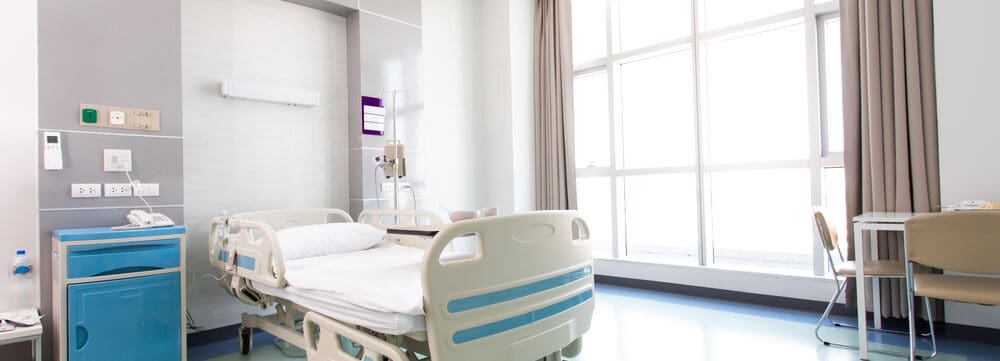Blog
Can Hospital Designs Reduce Risks?

The greatest risks for patients during a hospital stay are hospital-acquired infections, medical errors, and falls. This is where a hospital’s physical design becomes a crucial element of patient health, comfort, and well-being. Good hospital design can reduce these risks.
Design Elements that Prevent Infection
Hilliard Architects and Wikoff Design Studio presented the VA project team with a modified patient room that would reduce the risk of infection. Three main strategies are – private patient rooms with nearby nurses’ stations, large handwashing stations, and design materials that have better indoor air quality, maintenance, and infection control properties.
Private patient rooms and decentralized nurses’ stations help control the spread of infection. The private rooms help isolate contagious diseases while the decentralized nurse’s stations help contain the contagious disease and keep it to one spot.
Handwashing is the single most important method to prevent hospital infections. Large handwashing sink near the entrance of the room that is large enough to prevent splashing. The sink has hands-free control, a soap dispenser, and a paper towel holder.
The materials chosen by the design team are water and fluid resistant and easy to clean.
Design Elements that Prevent Falls
To help prevent slip and fall accidents, the design team created each room with straight lines and clear paths to the bathroom. Each bed has an adjacent handrail that leads all the way to the toilet. The bed and toilet are as close to each other as possible and in a straight line along the wall.
To prevent staff and patient-related falls, the design team installed a patient lift system that works on a ceiling track. The track configuration is ideal as it mobilizes the patient and assists them from the bed into the bathroom.
Knowledge Means Prevention
While you can’t defend against everything, you can defend against what you know. The more prepared, the better the outcome.
If you’re interested in more articles like this one check out VA Hospitals Take on Evidence Based Design, Understanding Evidence-Based Design and 5 Examples of Its Value, and Operating Rooms Designed to Benefit Patients and the Environment.
Marie Wikoff is the creator of Wikoff Design Studio based out of Reno, Nevada. Her expertise in healthcare design has helped develop modern design for healthcare organizations locally, regionally and internationally. Her credentials include Evidence-Based Design Accreditation and Certification (EDAC), American Academy of Healthcare Interior Designer (CHID), the National Council of Interior Design Qualification (NCIDQ) and LEED AP. Contact Marie Wikoff







